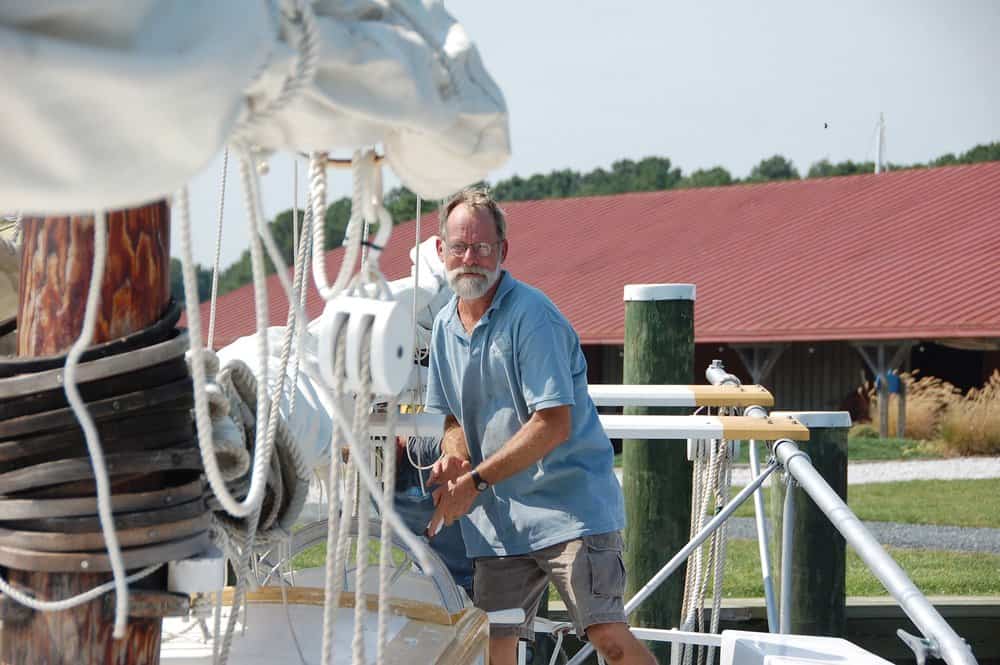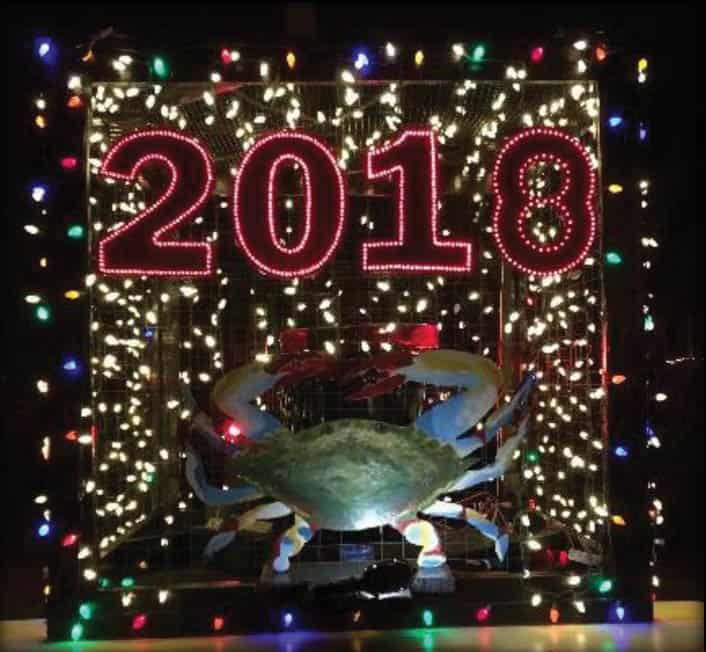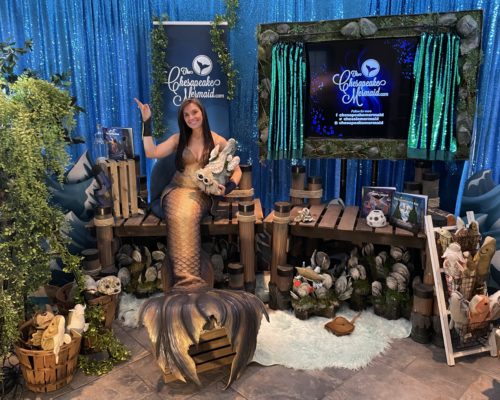Richard Scofield‘s three decades at the Chesapeake Bay Maritime Museum.
Few people on the Chesapeake Bay are as fully immersed in Bay craft as Richard Scofield, who recently retired after 33 years at the Chesapeake Bay Maritime Museum. But if you ask him, it’s not that he chose the boats. They chose him. ¶ When you’re 12 years old, the last thing you’re thinking about is destiny. But when Richard Scofield’s great-uncle Al, who had carved a boatyard out of family land next to a Connecticut salt marsh in the 1920s, asked Richard if he’d go up a rig, destiny was perched in that bosun’s chair with him. Richard, who at the time weighed about 80 pounds soaking wet, was the best candidate for the job. And what great-uncle, who well remembered the days of square riggers, wouldn’t want to give a young boy the chance to be up so high with a job to do, the boat an arrow beneath him?
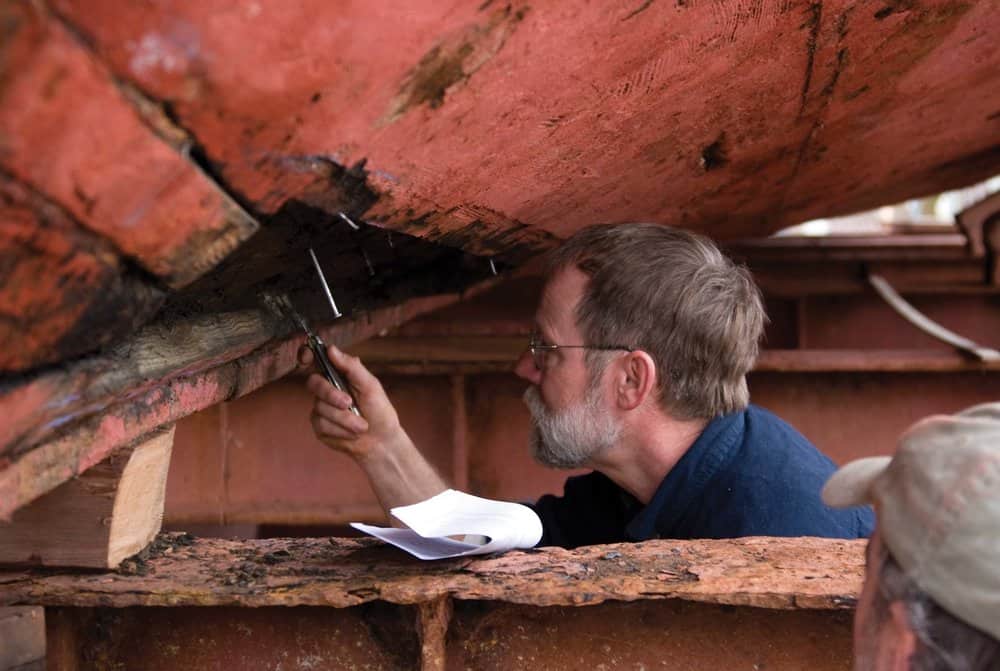
“I thought it was cool,” Scofield says. “When I came down, he handed me five bucks and said, ‘Let’s not tell Mom about this. Let’s make it our secret.’ So I did that off and on. I started getting paid to work on boats. I was 12 years old.”
The influence of mentors like Uncle Al and the late Joe Liener, once head of the wooden boat shop at the Philadelphia Naval Shipyard, in the life of Richard Scofield would eventually make him one of the country’s most valuable troves of traditional boatbuilding knowhow. And for 33 years he expanded and shared that knowledge in his varied roles at the Chesapeake Bay Maritime Museum in St. Michaels until his retirement, as assistant curator of watercraft, at age 63 this past February. It’s fair to say that there are no boats in the museum’s collection, from the smallest crab skiff to the venerable bugeye Edna E. Lockwood, that doesn’t have a little bit of Richard Scofield in them.
It wasn’t really his choice.
“I asked Uncle Al one time … why did you decide to start a boatyard? And he said, ‘Richard, I didn’t choose boats. They chose me.’ He said, ‘Someday you’ll understand that.’ When Al died in ’77, I was 23 years old, and he saw it already. At that time, I didn’t understand, but I do now. I’m from St. Michaels. There’s a museum in my home town. It was founded by my grandparents’ best friends. Kind of meant to be.”
“Richard has been on our staff longer than any other staff member in the history of CBMM,” said Chief Curator Pete Lesher in a press release announcing Scofield’s retirement. “His depth of knowledge about our historic boats and the stewardship he exercised toward them is inestimable. In numerous ways, he is simply irreplaceable.”

Scofield was born in Connecticut, but he ended up spending most of his time in St. Michaels after his grandparents bought a farm outside of town in the 1940s. Despite school in Connecticut and then a psychology degree with a minor in art history at Bates College in Maine, “This was always home to me.”
Working for his uncle at Scofield’s Boatyard in Stamford, Richard was immersed in wooden boats and traditional boatbuilding from the start, and he continued his education in the trade here and there as he went along.
“After college, I was a ski bum and boat bum. I lived on boats in the summer, and I’d come home in the fall and get my cold clothes and go skiing,” Scofield says. “Eventually I realized I hadn’t been home for more than a week-and-a-half at any one time, and I just wanted to come home.”
During the summer of 1980, he came to the Chesapeake Bay Maritime Museum and worked in the boat shop, then spent four years at neighboring Higgins Yacht Yard. In 1985, the destiny that had been in the bosun’s chair again called his name when he took a fulltime job in the museum’s boat shop as a painter and shipwright. It was a natural for him, but Scofield’s connection to the museum went far deeper than hands-on boat craft. Vida Van Lennep, who with her husband Gus founded the maritime museum in the early 1960s, knew the young Scofield well.
“They’re like grandparents to me. My grandparents passed away in 1961, and the Van Lenneps were about midway in age between my parents and grandparents, and they kind of took over that role. And Vida and I had the same birthday,” he says. “She was a force of nature. When she suggested you should do something, you generally did it. When I was back in Connecticut, she called my parents and said, ‘We just started a maritime museum in St. Michaels. You’re the first members. You owe me ten dollars.’ Dad didn’t argue, he sent her ten dollars. So, my parents were actually the first members of the museum.”
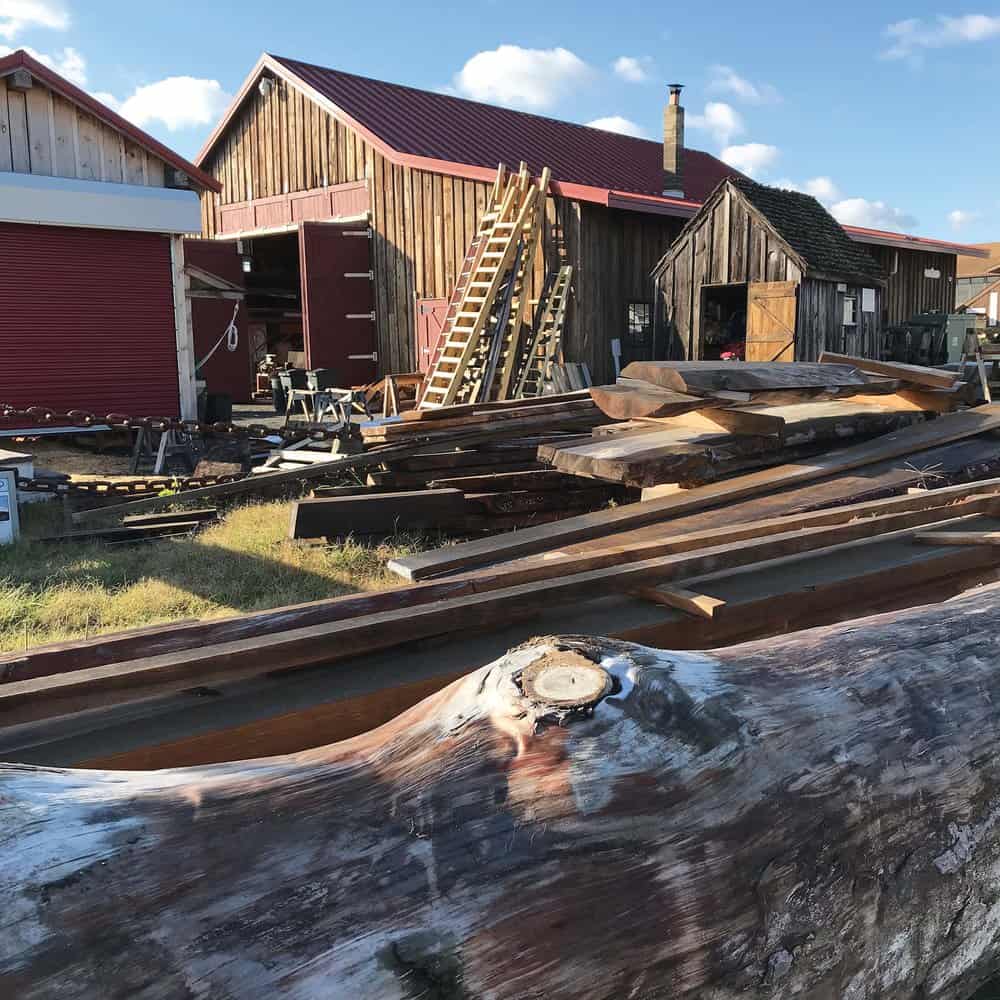
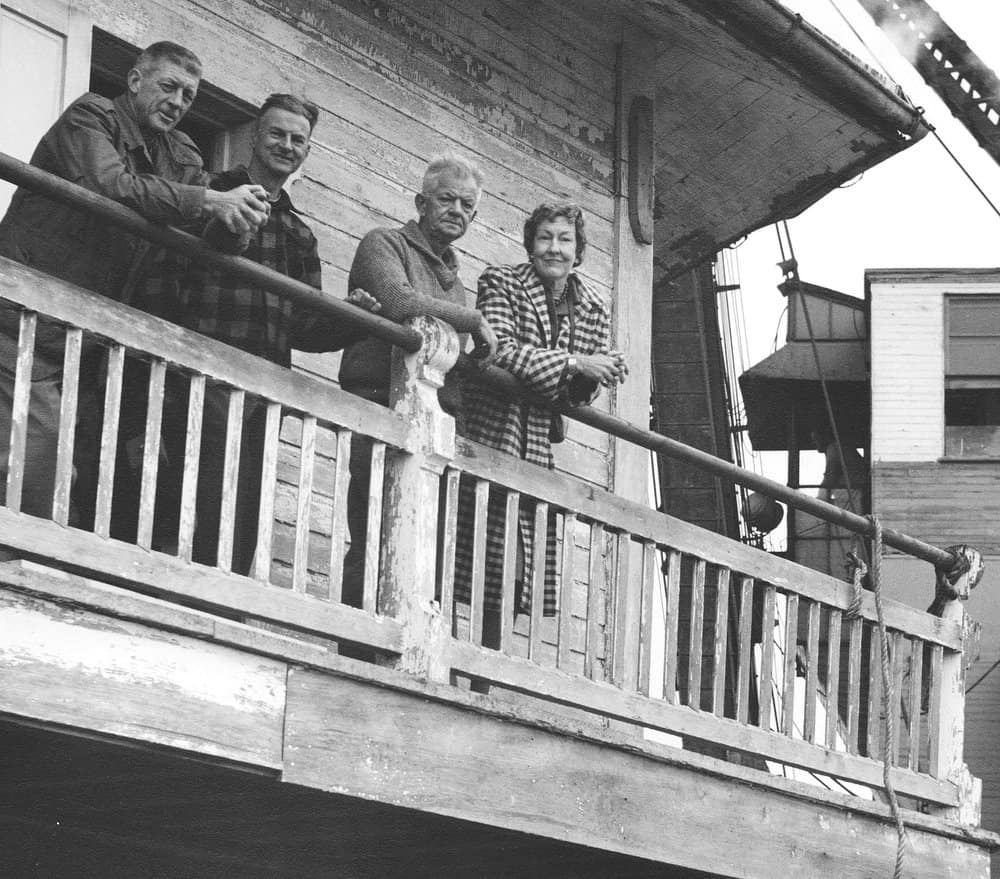
Richard soon became assistant boatyard manager, and then, in 2005, became manager of the boatyard, which oversees the working shipyard and the museum’s floating fleet. Comprised of about ten boats at any one time, the fleet includes the 1889 bugeye Edna E. Lockwood, a National Historic Landmark, the 1909 crab dredger Old Point, the 1934 Hoopers Island dovetail Dorothy Lee, and most recently, the 1920 buyboat Winnie Estelle, who returned all the way from a midlife in Belize and Guatemala to her home on the Chesapeake.
Every one of these vessels is a national and Chesapeake treasure, and every one of them is a serious handful to maintain and in some cases restore. Workboats in purpose and provenance, they were often built with whatever materials were available (quality wasn’t as big a factor as quantity and cost), by rack of eye, and with no illusions about a terribly long lifespan.

“Rosie Parks was a skipjack, and if they got 30 years out of a skipjack, they made their money,” he says. “She was built in ’55 so, she’s on borrowed time. We just finished a major rebuild on her.
“This will be the second major rebuild for the Edna Lockwood, that we’re on now. They rebuilt her in the ’70s from the logs up. Now we’re doing the logs, so she will be completely rebuilt, but she will still be the Edna Lockwood.
“That has been our most important thing all these years is to maintain those boats and do the repairs they need constantly,” he says. “We have without question the finest collection of Chesapeake Bay boats in the world in this museum, and the floating fleet is kind of different. The smaller boats I put on display, you can restore them if you want one time. But if you have a boat in the water, in the weather, 12 months a year, it’s hard on them. And they weren’t the best-built boats of all time, they were work boats primarily.”
Restoring and maintaining these boats takes money, knowledge, and skill, but also creativity and some flexibility. And one more thing: a certain determination.
“Joe Liener pointed out to me once that all boats die, and Edna was on the railway and the logs were starting to fall apart. And he said,
‘All boats die,’ and I said, ‘You’re going to have to explain that to the office, you want to go over there and tell them that?’ And he said ‘No, that’s your job.’ ’’
It was during this time that Scofield helped set in motion what he says is his proudest accomplishment: the museum’s Shipwright Apprentice Program. In the beginning, the practical impetus for the program was warm bodies with eager, if relatively unskilled, hands. The museum had gotten a contract from the state to restore the working skipjacks, and it needed help.
But over time the program developed into something much more focused, with an overarching purpose, for Scofield, that was grounded in a sense of responsibility to pay forward all the knowledge that his mentors had given him. Joe Liener, for example, “was the best boatbuilder I have ever known or will know. He was a legend. Took me under his wing, taught me a lot. He knew everybody in the industry, he would take me to meet all these old boatbuilders in places you would never have found otherwise, and he found boats for us. He was just a
great teacher.”

Liener, Uncle Al, Tom Howell (who was the museum’s boatyard manager when Scofield first started there full time in 1985), Jim Richardson, Maynard Lowery—all of these craftsmen shared what they knew with Scofield and other youngsters coming up in the trade.
“I was convinced by my uncle and all these guys, it wasn’t fair for me to just take that knowledge away,” he says. “So we’re training the next generation.”
Through the program, which began in about 2000, young shipwrights who have graduated from schools like the Landing School in Maine and the Northwest School of Wooden Boatbuilding in Port Hadlock, Washington, can come to St. Michaels to hone and expand their skills—something like a graduate school for shipwrights. Here, they get hands-on experience in traditional craft restoration and maintenance, as well as learning about working with the public in a museum setting.
“I have ex-apprentices who helped build the Virginia and the Spirit of South Carolina, and now there’s one in San Diego,” he says. “I’ve got them at museums all over the place and in boat shops. We’ve had about 52 go through the program and 44 are working in the field, which is pretty cool, I think.”
In fact, it was a former apprentice, Michael Gorman, whom the museum chose to become shipyard manager when Scofield moved from that position to assistant curator of watercraft in 2011. Gorman has overseen the innovative restoration of the Edna E. Lockwood, which is to be completed this fall. Fascinated by the project, Scofield has remained deeply involved, if not hands-on.
“Edna Lockwood is one of my favorite boats. She is just spectacular. She sails incredibly well. And she’s the last log-hull sailing bugeye existing. So, she’s not just important, she’s a great boat,” he says. “She’s still my boat. I’ve sailed her more than anybody walking the earth now.”
Perhaps it’s the combination of pride, awe, sense of history, and knowledge of traditional boatbuilding craft that made Scofield’s shift from boatyard manager to assistant curator of watercraft such a natural transition. In the new role, Scofield’s responsibilities encompassed all of the boats in the museum’s collection—92 at one time, presently 88. Some of them are in storage, while the majority are on display throughout the museum, including in the water and in the museum’s Small Boat Shed.
“I have an affinity with a lot of the small boats in the collection, which is why I’ve gone over to the curatorial side. And I do a lot of the maintenance on the small boats, even the ones in storage,” Scofield says. “Boats on the Chesapeake Bay, there a lot of different styles, but they were built for what they were going to be used for, and where they’re going to do it. There are 50 styles of crabbing skiff, and I can look at it and tell you where that boat was built. You can tell by the hull shape what they are trying to deal with, and what they’re trying to do with the boat.”
The more nuanced part of the job is to refine the collection, keeping in mind a larger narrative that needs to be told about the boats in their particular context, as well as the larger context of Bay history.
“It’s a different mindset, a different appreciation of the boats,” he says. “There’s an historical perspective and trying to tie all those histories together and all the boats into a comprehensive story. They’re not just individual boats, they’re all part of that fabric. And not many people see it that way.”
Chosen by the boats, Richard Scofield’s vision has never strayed from his pole star, which continues to shine through chine, sheer, and deadrise.
“It’s between me and the boats. It’s me and Edna Lockwood, me and Rosie Parks,” he says. “The boats are what matter to me.”

